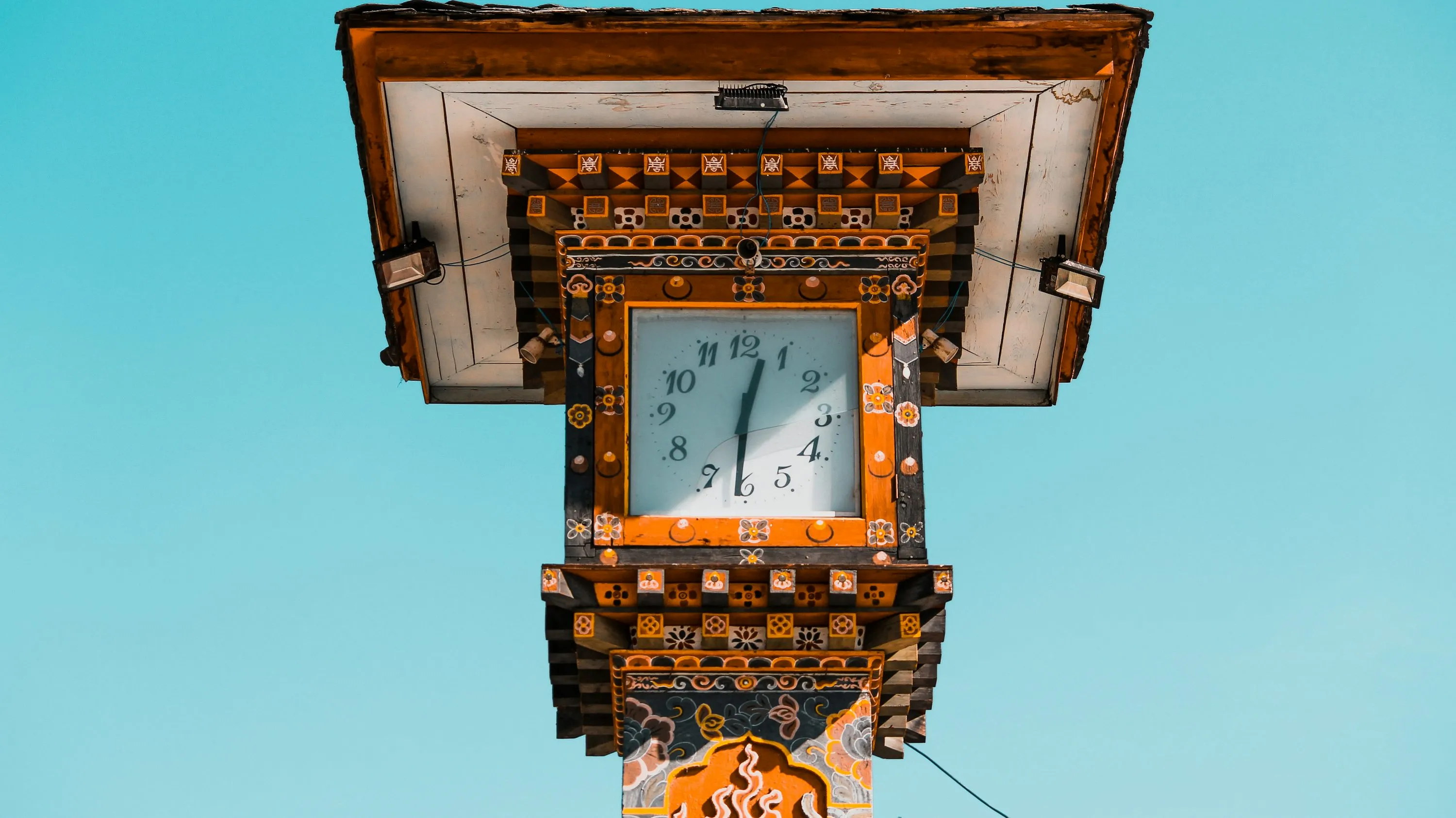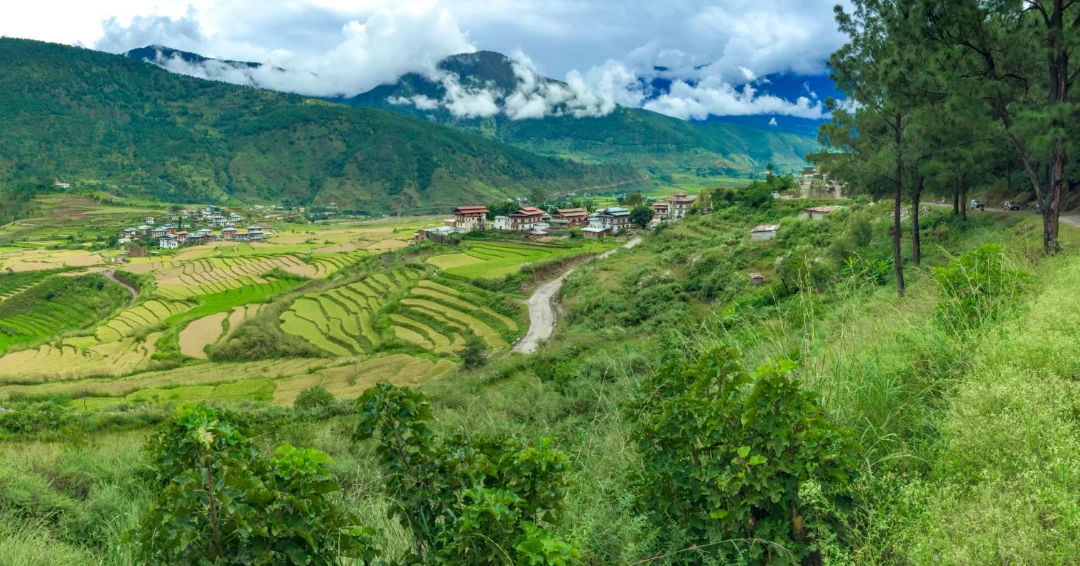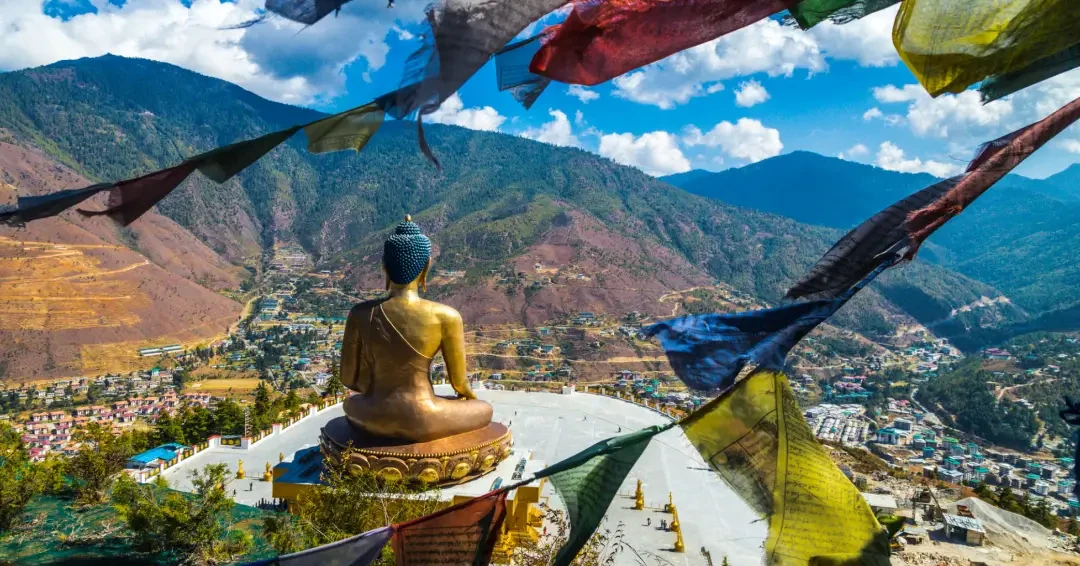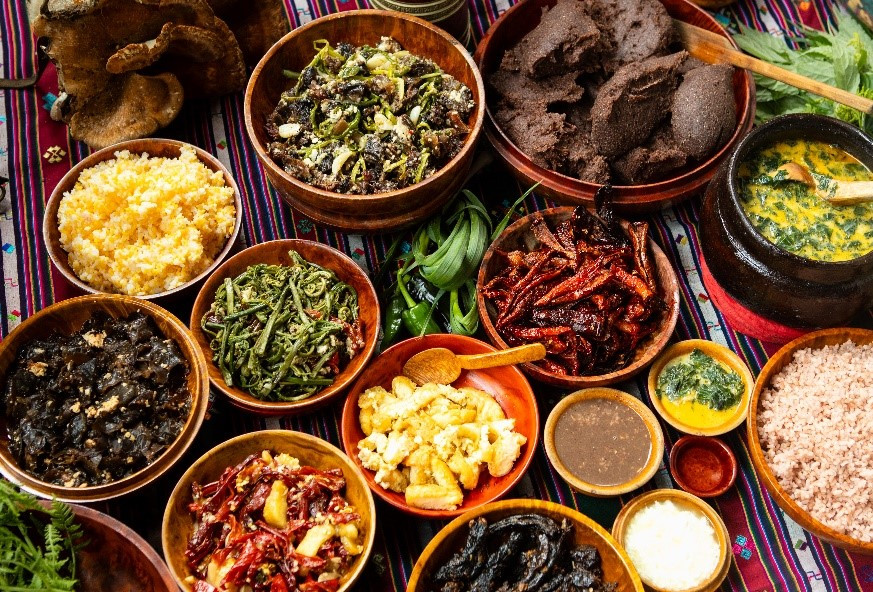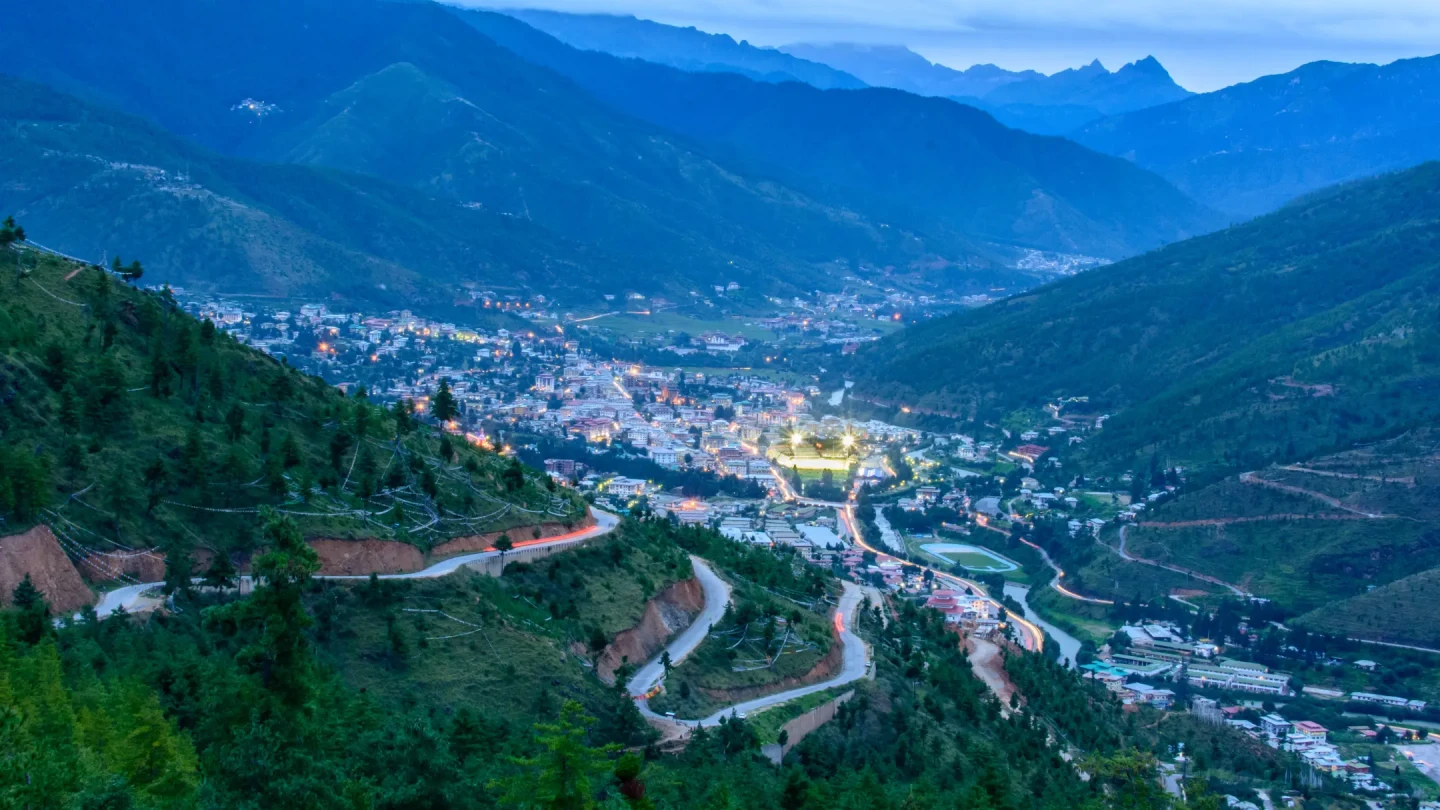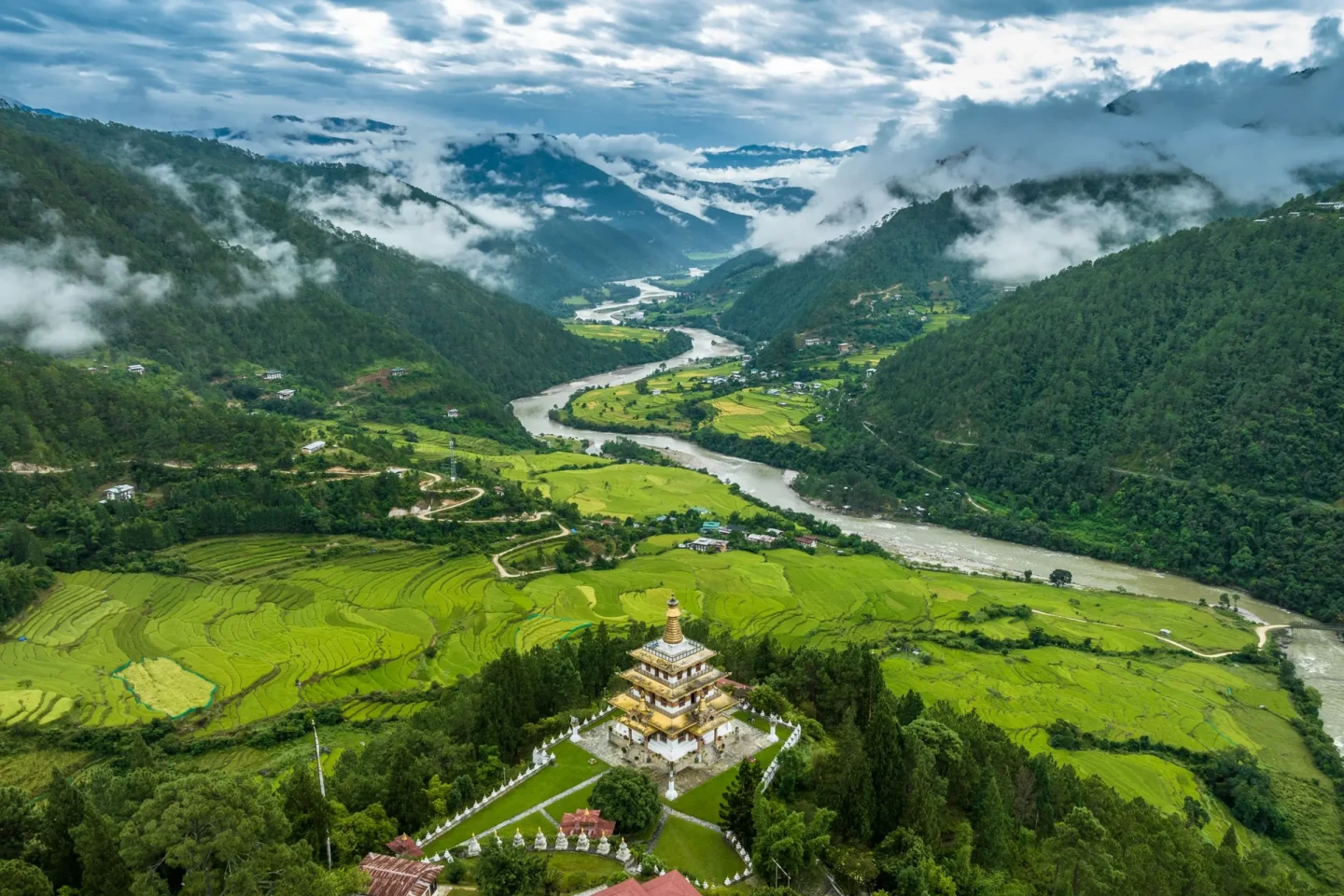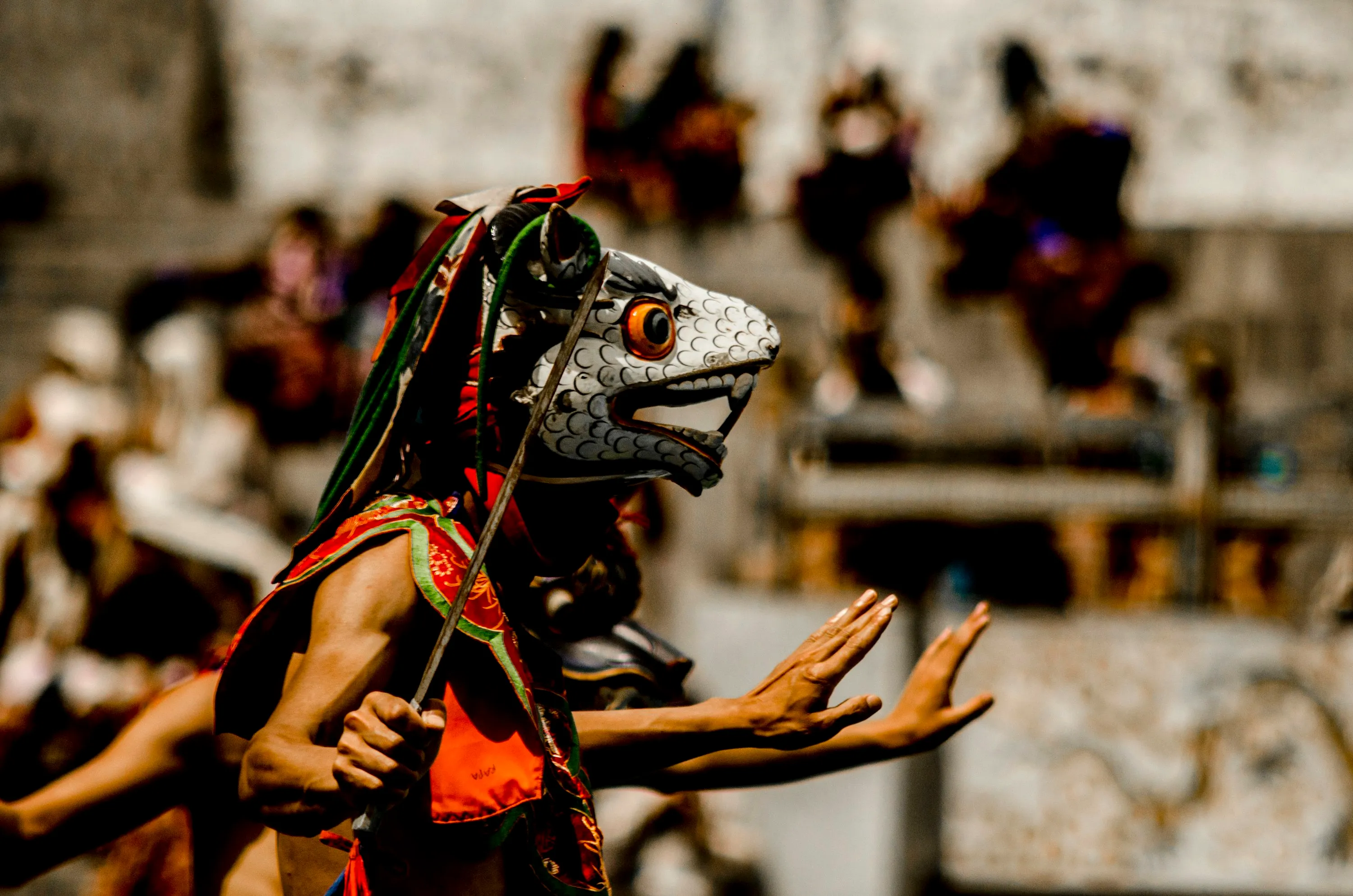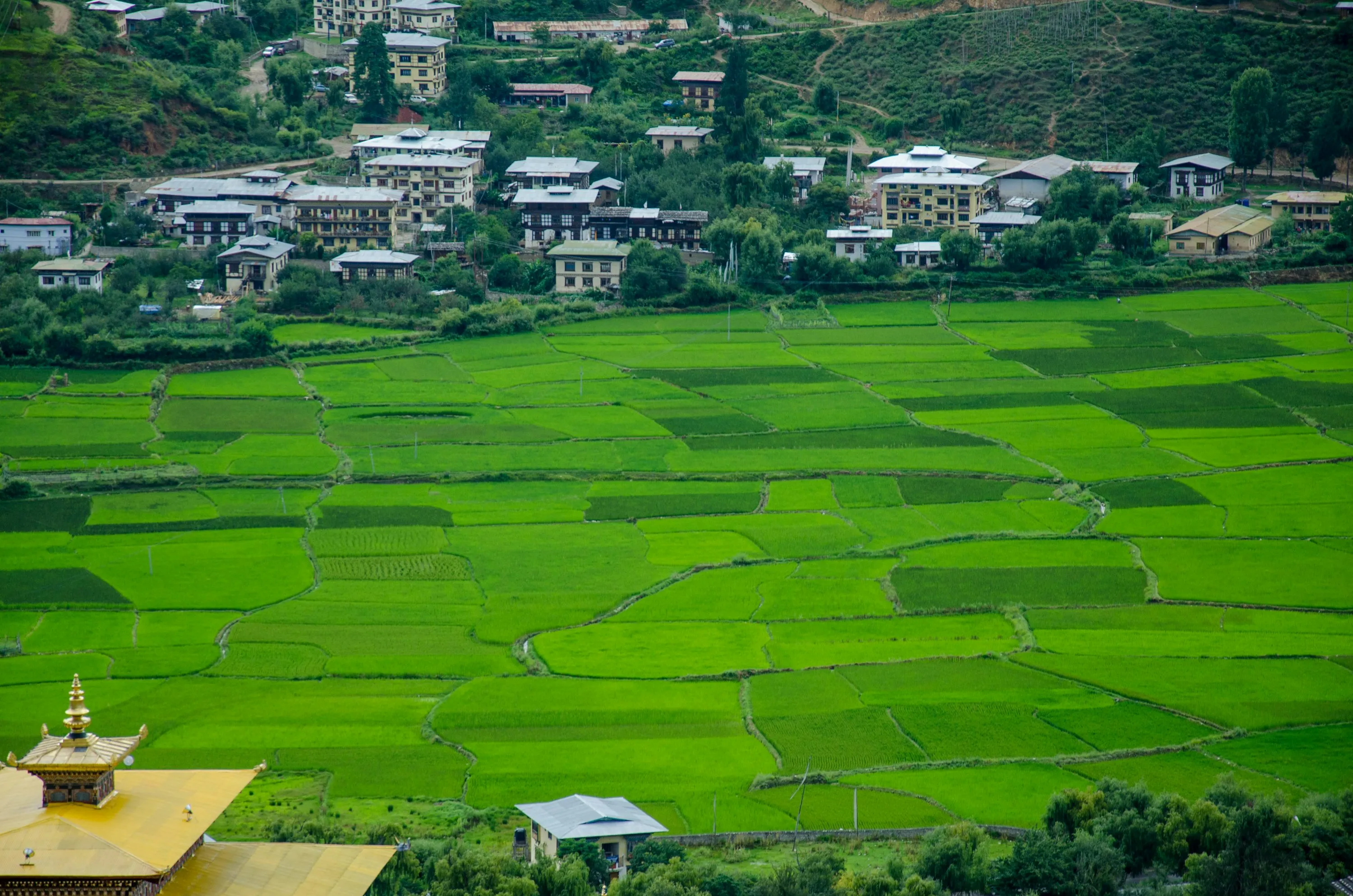Nestled in the heart of the Eastern Himalayas, Bhutan, the Land of the Thunder Dragon, is a destination that feels like a whispered secret of the world. For British travellers, Bhutan offers an unparalleled journey into a kingdom where ancient traditions, pristine landscapes, and a philosophy of happiness converge to create an experience unlike any other. This small, landlocked nation, bordered by India and China, has deliberately preserved its cultural heritage and natural beauty through a cautious approach to tourism, making it a rare gem for those seeking authenticity and depth. The relationship between Bhutan and the United Kingdom, while not deeply historical, is marked by mutual respect, with the UK recognizing Bhutan’s unique approach to development through its Gross National Happiness (GNH) philosophy. Both nations share a reverence for tradition—Britain with its monarchy and storied history, Bhutan with its Buddhist heritage and communal values—yet they differ vastly in pace and scale. Where the UK thrives on its global connectivity and urban vibrancy, Bhutan embraces a slower, introspective rhythm, prioritizing spiritual and environmental harmony over material progress. This guide, crafted with the expertise of a Bhutanese travel consultant, is designed to prepare British travellers for a transformative journey, covering every practical detail and cultural nuance to ensure a seamless and respectful visit to this Himalayan sanctuary.
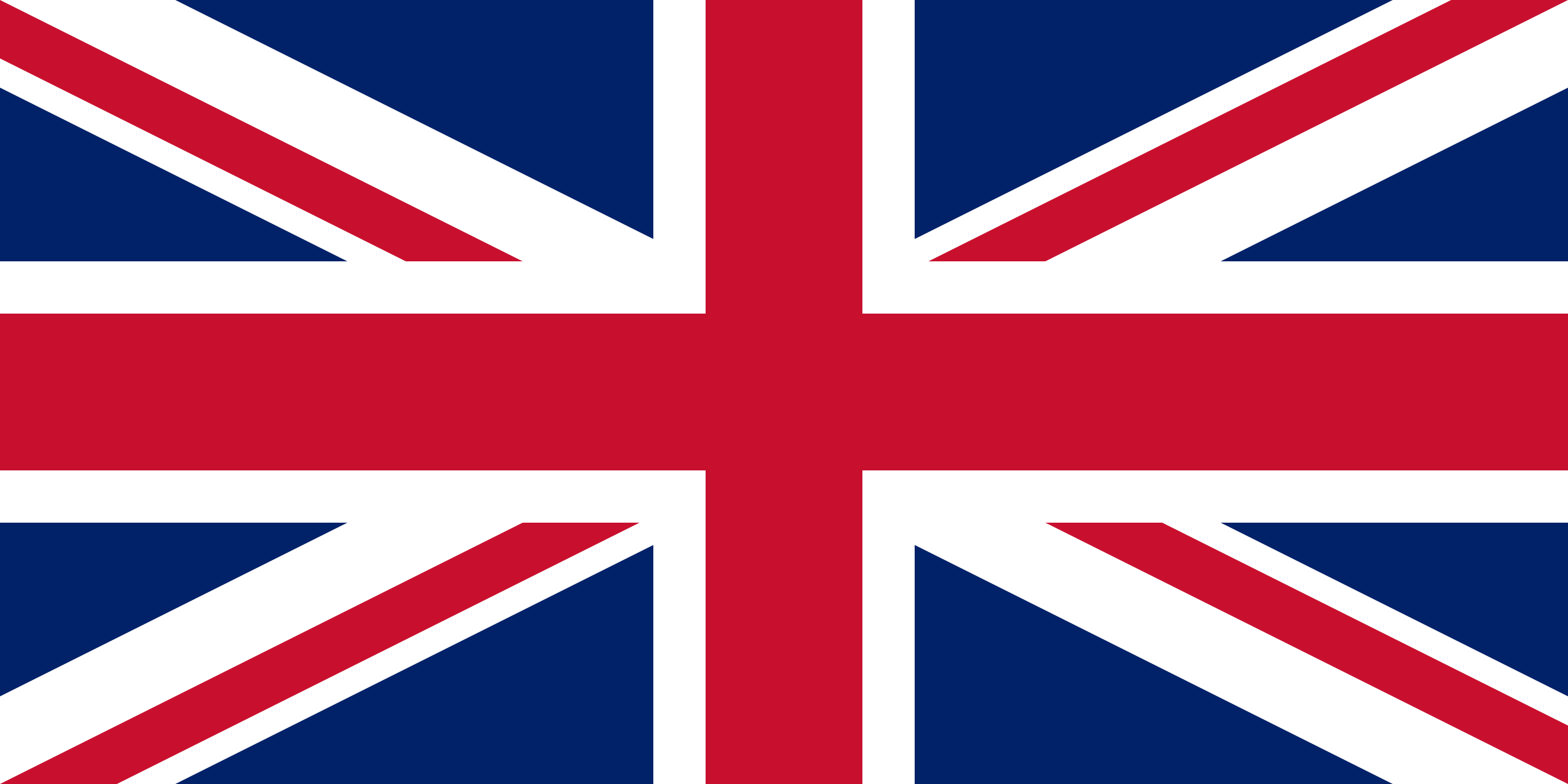
Visa and Entry Requirements
Bhutan’s tourism policy is defined by its “High Value, Low Impact” ethos, a deliberate strategy to protect its cultural and environmental integrity by limiting visitor numbers and ensuring meaningful experiences. For British travellers, this means all trips must be arranged through a licensed Bhutanese tour operator or an international partner affiliated with one. The visa process is straightforward but requires advance planning. British travellers must provide a digital passport-sized photograph and a scanned copy of their passport (valid for at least six months beyond the planned departure date from Bhutan) to their chosen tour operator, who will submit the application to the Department of Immigration in Thimphu. The visa, costing USD 40 per person, is processed within approximately five business days, and upon approval, travellers receive a visa clearance letter, which must be presented at the port of entry (Paro International Airport or land borders at Phuentsholing, Gelephu, or Samdrup Jongkhar). The visa is stamped into the passport upon arrival. A key component of the visa process is the Sustainable Development Fee (SDF), set at USD 100 per adult per night (with a 50% discount for children aged 6–12 and no fee for those under 6), effective until August 31, 2027. This fee, payable through the tour operator, funds Bhutan’s conservation efforts, education, healthcare, and infrastructure, reflecting the kingdom’s commitment to sustainable tourism. British travellers should ensure their tour operator clarifies how the SDF is handled, as it significantly impacts the overall cost of the trip, which must be paid in advance via bank transfer to secure visa clearance and flight bookings.
Travel Routes from the United Kingdom to Bhutan
Travelling from the United Kingdom to Bhutan requires careful planning due to the kingdom’s remote location and the unique operational constraints of Paro International Airport, one of the world’s most challenging airports to navigate, surrounded by 5,500-meter peaks. No direct flights connect the UK to Bhutan, so British travellers must transit through regional hubs such as Delhi or Kolkata (India), Bangkok (Thailand), or Kathmandu (Nepal). The two airlines serving Bhutan, Drukair (Royal Bhutan Airlines) and Bhutan Airlines, operate flights to Paro from these cities, with Delhi being the most common transit point due to its frequent connections from London. For instance, British Airways or Virgin Atlantic offers daily flights from London Heathrow to Delhi’s Indira Gandhi International Airport (approximately 8–9 hours), followed by a 2-hour Drukair flight to Paro. Alternatively, travellers from London, Manchester, or Edinburgh can fly to Bangkok via Thai Airways or other carriers (11–12 hours), then connect to Paro (4–5 hours). Kathmandu is another viable option, with flights from London via Dubai or Doha (via Qatar Airways or Emirates, totaling 12–14 hours), followed by a 1-hour flight to Paro. Flights to Paro operate only during daylight hours due to the airport’s challenging terrain and reliance on visual flight rules, and weather conditions, particularly during the monsoon season (June–September), can cause delays or cancellations, sometimes requiring overnight stays in transit cities. British travellers should book flights at least 6–12 months in advance, especially for peak seasons (March–May and September–November), and opt for flexible tickets to accommodate potential disruptions. It’s advisable to coordinate flight bookings through the tour operator, as they can secure seats on Drukair or Bhutan Airlines, which often sell out quickly, and provide assistance with any weather-related changes.
Best Time to Visit and Seasonality
Bhutan’s climate is as diverse as its topography, ranging from subtropical lowlands to alpine highlands, creating distinct seasons that profoundly influence travel experiences. Spring (March to May) brings mild temperatures averaging 10–20°C in valleys like Paro and Thimphu, with blooming rhododendrons and jacarandas painting the landscapes in vibrant hues, making it ideal for trekking and cultural tours; however, occasional showers can occur, and pollen may affect allergy sufferers. Summer (June to August) ushers in the monsoon, with heavy rainfall (up to 500mm monthly) leading to lush greenery but also landslides, foggy conditions, and leeches on trails, though it’s a quieter time for festivals like the Matsutake mushroom events in August. Autumn (September to November) offers clear skies, crisp air (5–15°C), and golden rice fields, perfect for festivals such as the Thimphu Tshechu in September, where mask dances and religious rituals draw crowds, but expect higher visitor numbers and cooler nights at higher elevations. Winter (December to February) features cold, dry weather (0–10°C in valleys, sub-zero in mountains) with possible snowfall in passes, limiting trekking but providing stunning Himalayan views and smaller crowds for monastery visits. For British travellers accustomed to temperate climates, the best months are March to May and September to November, balancing pleasant weather for outdoor activities like hiking the Tiger’s Nest trail, fewer crowds than peak festival times, and opportunities to witness cultural highlights without the extremes of monsoon humidity or winter chill. Planning around festivals enhances the trip, but advance bookings are essential to avoid overcrowding in limited accommodations.
Money, Costs, and Payment Methods
Bhutan’s official currency is the Ngultrum (BTN), pegged at par with the Indian Rupee (INR), which is also widely accepted throughout the country. British travellers can exchange GBP for BTN or INR at Paro Airport, major banks like the Bank of Bhutan or Bhutan National Bank in Thimphu and Paro, or authorized money changers, though rates may be less favorable outside urban areas; it’s wise to carry crisp USD notes as a backup, as they are easily convertible and sometimes preferred for larger transactions. ATMs are available in larger towns like Thimphu, Paro, and Punakha, accepting Visa and Mastercard, but rural areas have limited access, and withdrawal fees (around BTN 200–500) plus foreign transaction charges apply—check with your UK bank for compatibility and notify them of travel plans to avoid card blocks. Credit cards are accepted in upscale hotels, some restaurants, and craft shops in tourist hubs, but cash is king for local markets, tips, and small purchases. Tour prices, mandated by the government, typically include accommodations in 3-star hotels or better, all meals (breakfast, lunch, dinner), private transport with a driver, an English-speaking guide, entrance fees to sites, and the SDF, starting from around USD 250 per person per night in low season, but excluding international flights, travel insurance, alcoholic beverages, laundry, and personal expenses like souvenirs. Extra costs might include tips for guides and drivers (USD 10–15 per day each, customary but discretionary), premium drinks, optional activities like hot stone baths (USD 20–50), and any upgrades to luxury lodges, so budgeting an additional USD 50–100 per day ensures comfort without surprises.
Health, Safety, and Travel Insurance
Health considerations in Bhutan revolve around its high-altitude terrain and remote locations, where medical facilities are basic outside major towns. Altitude sickness is a primary risk, with symptoms like headaches, nausea, and fatigue possible above 2,500 meters—common in places like Paro (2,200m) or Dochula Pass (3,100m)—so gradual acclimatization, hydration, and avoiding alcohol are crucial; consult a doctor for preventive medications like acetazolamide if prone to issues. Recommended vaccinations for British travellers include Hepatitis A, Typhoid, Tetanus, Diphtheria, and possibly Rabies due to stray dogs, while routine UK jabs like MMR should be up-to-date; check with a travel clinic 4–6 weeks before departure, as malaria risk is low but present in southern borders. Medical facilities in Thimphu’s Jigme Dorji Wangchuck National Referral Hospital are adequate for minor issues, but serious cases may require evacuation to India or Thailand. Bhutan is exceptionally safe with low crime rates, thanks to its close-knit communities and Buddhist values, but minor risks include stray dogs (avoid feeding or approaching), uneven trekking paths that can lead to slips, and occasional petty theft in crowded festivals—simple precautions like secure belongings and guided travel suffice. Comprehensive travel insurance is essential, covering medical emergencies, evacuation by helicopter (costing USD 5,000+), trip cancellations, and adventure activities; British travellers should verify policies include high-altitude coverage and COVID-related contingencies, as the UK government advises against relying solely on the EHIC/GHIC here.
Cultural Etiquette and Social Expectations
Bhutanese society is deeply rooted in Vajrayana Buddhism, fostering customs that emphasize respect, harmony, and mindfulness, which British travellers should embrace to enrich their experience. In temples, monasteries, and dzongs (fortress-monasteries), remove hats, shoes, and sunglasses before entering, dress modestly with covered shoulders and knees (long pants or skirts, no shorts or tank tops), and walk clockwise around stupas or prayer wheels as a sign of reverence—pointing feet at religious icons or stepping over sacred objects is considered disrespectful. Social interactions value humility and patience; greet with “Kuzuzangpo la” (hello) and a slight bow, accept or offer items with both hands or the right hand supported by the left, and avoid public displays of affection or loud behavior, as Bhutanese culture prioritizes collective well-being over individualism. In public spaces, refrain from touching people’s heads (considered sacred) or discussing the monarchy critically, as the king is revered; photography of locals requires permission, and bargaining in shops is subtle, not aggressive. British travellers, known for politeness, may need slight adjustments—like softening directness in conversations to align with Bhutanese indirect communication—or embracing the communal sharing of food and stories during homestays. These nuances not only prevent faux pas but deepen connections, allowing visitors to appreciate Bhutan’s emphasis on compassion and environmental stewardship.
Connectivity, SIM Cards, Internet Access
Connectivity in Bhutan has improved significantly, though it remains variable due to the mountainous terrain, providing British travellers with reliable options for staying in touch without the seamless coverage of urban UK. Wi-Fi is widely available and generally free in hotels, guesthouses, and cafes in major towns like Thimphu and Paro, with speeds sufficient for emails, social media, and video calls (10–50 Mbps), but slower or intermittent in remote valleys or during power outages; upscale lodges often offer better reliability. For mobile data, local SIM cards are essential for navigation and communication on the go—Bhutan Telecom (B-Mobile) and TashiCell are the primary providers, with B-Mobile offering broader coverage, especially in rural areas. British travellers can purchase a tourist SIM (around BTN 200–500 for 5–10GB data, valid 7–30 days) at Paro Airport upon arrival or at operator outlets in Thimphu, requiring a passport copy and photo; activation is quick, and top-ups are available via apps or scratch cards. Note that some UK apps or services may face geo-restrictions, and roaming charges from British providers like Vodafone or EE can be exorbitant (up to £6 per MB), so a local SIM is cost-effective. VPNs are highly useful for accessing restricted content or secure banking, as Bhutan has no major internet censorship but occasional slowdowns during high usage; download one before departure to ensure privacy on public networks.
Language and Communication
Language barriers in Bhutan are minimal for English-speaking British travellers, as English is the medium of instruction in schools and widely used in government, education, and tourism sectors. The official language is Dzongkha, a Tibeto-Burman tongue spoken by most locals, but English proficiency is high among guides, hotel staff, and younger generations, ensuring smooth interactions during tours, bookings, and daily needs. Dzongkha-speaking guides are standard, as all licensed guides are fluent in it alongside English, and they often act as cultural interpreters, explaining nuances like festival chants or monastery inscriptions. For travellers with limited English—perhaps non-native speakers in a group—visual aids, translation apps like Google Translate (with Dzongkha support), or simple gestures work well, given Bhutanese hospitality. In remote villages, where regional dialects like Sharchop or Lhotshamkha prevail, guides bridge gaps effectively. British travellers can enhance communication by learning basic Dzongkha phrases like “Ga chi bey?” (What is this?) or “Thuchey” (Thank you), fostering goodwill; patience is key, as conversations may unfold slowly, reflecting the unhurried Bhutanese pace. Overall, the prevalence of English in tourism makes Bhutan accessible, but embracing local languages adds depth to cultural exchanges.
Packing and Preparation Advice
Packing for Bhutan demands versatility to handle its varying climates, from subtropical warmth in the south to chilly Himalayan heights, so British travellers unfamiliar with such extremes should prioritize layers and practicality. Essential clothing includes breathable, quick-drying layers like moisture-wicking base tops, fleece jackets, and waterproof windbreakers for sudden rain or mountain winds; pack long pants, modest shirts for cultural sites, and warm thermals for evenings or winter visits—avoid heavy cotton, opting for merino wool or synthetics. Sturdy, broken-in hiking boots with good grip are crucial for trails like Tiger’s Nest, paired with thick socks and sandals for hotel use; a wide-brimmed hat, sunglasses, and high-SPF sunscreen protect against intense UV at altitude. Personal items should include reusable water bottles (to minimize plastic), insect repellent for lowlands, lip balm and moisturizer for dry air, and a first-aid kit with plasters, antiseptics, and altitude meds. Medications are vital: bring prescriptions for any conditions, plus over-the-counter remedies for diarrhea, allergies, and motion sickness due to winding roads; Diamox for altitude if advised. Power adapters for Bhutan’s 220–240V system (types D, F, G plugs, similar to India) are needed for UK devices, along with a portable charger for outages. Other considerations: binoculars for wildlife, a headlamp for rural nights, eco-friendly toiletries, and a daypack for excursions—limit luggage to 20kg for domestic flights. Prepare by checking weather apps, consulting your GP for vaccinations, and packing light to ease travel on Bhutan’s rugged roads.
Bhutan’s Unique Tourism Philosophy
Bhutan’s tourism philosophy is intrinsically tied to its pioneering concept of Gross National Happiness (GNH), introduced in the 1970s by the Fourth King, Jigme Singye Wangchuck, as a holistic measure of progress beyond GDP, encompassing psychological well-being, health, education, cultural diversity, good governance, community vitality, ecological integrity, and living standards. This framework shapes the country’s cautious tourism policies, prioritizing “High Value, Low Impact” to ensure visitors contribute positively without overwhelming resources. Bhutan prefers quality over quantity in visitors by mandating guided tours, the SDF, and limited infrastructure development, which funds conservation and community projects while capping numbers to preserve pristine environments—over 70% of the land remains forested, making it carbon-negative. British travellers should understand these deeper reasons: limiting modernization and tourist numbers protects vulnerable ecosystems from pollution, safeguards ancient traditions from commodification, and maintains social harmony in a small population of under 800,000. This approach fosters authentic interactions, like homestays and festival participation, rather than mass tourism’s superficiality, allowing visitors to experience Bhutan’s spiritual essence while supporting its vision of balanced development where happiness trumps economic gain.
Mindset and Expectations for Visitors
Adjusting expectations is key for British travellers venturing to Bhutan, where the kingdom’s slower pace of life and limited infrastructure offer a refreshing contrast to the UK’s efficiency and conveniences. Life unfolds deliberately here, influenced by Buddhist principles and rural rhythms—meals may take time to prepare, transport adheres to cautious speeds on winding roads, and daily routines prioritize mindfulness over haste, encouraging visitors to embrace serendipity rather than rigid schedules. Infrastructure is functional but modest: roads are often narrow and unpaved in remotes areas, leading to bumpy journeys of several hours between sites, while power outages are common due to hydroelectric reliance and weather. Hotels are small-scale, typically family-run or eco-lodges with comfortable but simple amenities—no sprawling resorts or five-star extravagance in most places—emphasizing sustainability over luxury. Absent are luxury shopping malls, high-street brands, or vibrant nightlife; instead, evenings might involve stargazing, traditional dances, or quiet reflection. The focus shifts to nature’s grandeur—treks through rhododendron forests, birdwatching in biodiversity hotspots—and cultural immersion like archery contests or monastery meditations, rather than material indulgences. This mindset invites British travellers to unplug, appreciate simplicity, and find joy in spiritual peace, transforming potential frustrations into opportunities for personal growth in a land where happiness is measured by inner fulfillment.
Food and Dining Culture
Bhutanese cuisine is a reflection of the kingdom’s agrarian roots and Himalayan environment, characterized by simple, hearty flavors that are often spicy, cheese-heavy, and vegetable-centric, with staples like red rice, chillies, and dairy forming the core of meals. Common dishes include ema datshi, the national favorite of chillies stewed in cheese sauce, which can be fiery for unaccustomed palates but embodies Bhutan’s love for heat as a flavor enhancer; other highlights are phaksha paa (pork with radish and chillies), momos (steamed dumplings filled with meat or vegetables), and jasha maru (spicy chicken stew), often accompanied by buckwheat pancakes or fermented yak cheese. Dining culture emphasizes communal sharing and hospitality—meals are family-style, served on low tables with guests encouraged to eat with hands (right hand only), fostering bonds over food; tea plays a central role, with suja (salty butter tea) sipped throughout the day for warmth and energy, while ngaja (sweet milk tea) offers a milder alternative. Alcohol, like ara (distilled rice or maize spirit) or locally brewed beer, is enjoyed moderately during social gatherings or festivals, symbolizing celebration but tempered by Buddhist moderation. British travellers might need to adjust to the spice levels—request milder versions if sensitive—but embracing these flavors reveals Bhutan’s generous spirit, where food is not just sustenance but a gateway to cultural connection and nourishment of body and soul.
Festivals, Religion, and Sacred Places
Religion permeates every aspect of Bhutanese life, with Vajrayana Buddhism as the spiritual cornerstone, guiding ethics, art, and community through monasteries, stupas, and sacred sites that visitors can explore for profound insights. Festivals, known as Tshechus, honor Guru Rinpoche (the second Buddha) with elaborate mask dances, colorful costumes, and rituals performed by monks, such as the Paro Tshechu in spring or Thimphu Tshechu in autumn, where locals in traditional attire gather for blessings, socializing, and merit-making—these events offer travellers a vibrant window into folklore and spirituality, often lasting days with archery and games. At sacred places like Taktsang Monastery (Tiger’s Nest) or Punakha Dzong, rules of conduct are strict: dress modestly (no shorts, hats off), speak softly, avoid pointing at statues, and circumambulate clockwise; photography is prohibited inside temples to preserve sanctity, and offerings like butter lamps encourage participation. These experiences deepen understanding of Bhutanese culture, revealing how religion fosters compassion, environmental respect, and communal harmony—travellers leave with a sense of renewal, having witnessed how faith integrates seamlessly into daily life, from prayer flags fluttering in the wind to monks chanting ancient mantras.
Hidden Challenges and Practical Inconveniences
While Bhutan’s allure lies in its unspoiled authenticity, travellers may encounter small inconveniences that test patience but ultimately enhance the journey’s charm. Service can be leisurely, as Bhutanese prioritize quality and mindfulness over speed—meals in local eateries or check-ins at guesthouses might take longer, reflecting a culture where rushing is uncommon. Itinerary changes are frequent due to weather, with monsoon rains causing road closures or flight delays at Paro Airport, or winter snow blocking high passes, requiring flexibility and backup plans from your guide. Power outages occur sporadically, especially in rural areas reliant on hydropower, so a torch or charged devices are handy, turning evenings into candlelit storytelling sessions. Road conditions add adventure: narrow, winding paths through mountains mean travel times stretch (e.g., Thimphu to Punakha takes 3–4 hours for 70km), with possible motion sickness, but they reveal stunning vistas. Patience is essential, as these elements stem from Bhutan’s commitment to minimal development, preserving its essence rather than conforming to modern efficiencies—framing them as part of the charm allows British travellers to slow down, connect deeply, and appreciate the kingdom’s deliberate pace as a respite from hurried lives.
Shopping and Souvenirs
Shopping in Bhutan centers on artisanal crafts that showcase the kingdom’s rich heritage, offering British travellers meaningful souvenirs rather than mass-produced items found in duty-free hubs or high-end malls, which are notably absent. Handwoven textiles like kira (women’s wrap) or gho (men’s robe) fabrics, made from silk, cotton, or wool with intricate patterns, are prized buys, available at Thimphu’s weekend market or Paro’s craft bazaars—prices range from USD 50–500, reflecting skilled labor. Other treasures include wooden masks, prayer wheels, thangka paintings (Buddhist scrolls), handmade paper products, and incense from local herbs, all embodying spiritual and cultural significance. Bargaining is not aggressive; a polite negotiation (5–10% off) is acceptable in markets but rare in fixed-price shops, where quality assurance is higher—always ask for certificates of authenticity for antiques or high-value items to avoid fakes, as exporting genuine antiquities is illegal. Authenticity shines in government-run emporiums like the Gagyel Lhundrup Weaving Centre, ensuring fair trade supports artisans. Without big shopping centers, the experience is intimate, often involving interactions with creators, turning purchases into stories of Bhutan’s sustainable craftsmanship and reminding travellers of the kingdom’s focus on meaningful, enduring mementos over fleeting consumerism.
Altitude Awareness and Physical Preparedness
Altitude affects travellers variably in Bhutan, where elevations range from 150m in the south to over 3,000m in popular sites, potentially causing acute mountain sickness (AMS) with symptoms like headache, dizziness, fatigue, nausea, or shortness of breath as the body adjusts to lower oxygen levels. These can onset within hours above 2,500m, as in Chele La Pass (3,988m), and vary by fitness, age, or prior exposure—even healthy individuals may feel effects, while severe cases like high-altitude pulmonary edema are rare but serious. Precautions include ascending gradually (no more than 300–500m per day after 2,500m), allowing 1–2 days in Paro for acclimatization before higher treks, staying hydrated (3–4 liters daily), eating light carb-rich meals, and avoiding alcohol, caffeine, or strenuous activity initially. During tours or treks, monitor symptoms with your guide, who carries oxygen; descend if worsening, and consider prophylactic meds like Diamox after medical advice. Physical preparedness involves pre-trip cardio like hiking or stair-climbing to build stamina, packing layers for temperature swings, and adjusting activities—shorten hikes if needed. This awareness ensures safe enjoyment of Bhutan’s heights, turning potential discomfort into a mindful adaptation to its majestic landscapes.
Security, Safety, and Emergency Information
Bhutan stands out as one of the safest destinations globally, with negligible violent crime due to its Buddhist ethos, small population, and vigilant communities, allowing British travellers to explore with peace of mind. Petty incidents are rare, but secure valuables in crowded festivals and heed guide advice on stray dogs or wildlife. For emergencies, dial 112 for police or 110 for fire/ambulance; medical help is at 112 as well, with hospitals in major towns. The UK has no embassy in Bhutan but an honorary consul in Thimphu for assistance (contact via +975-2-322-162), while the British High Commission in New Delhi, India, handles consular services (+91-11-2419-2100, open 24/7 for emergencies). Local laws demand respect: smoking is banned in public (fines up to USD 225), drug possession is severely punished, and environmental rules like no littering align with Bhutan’s eco-focus. Register with the UK FCDO’s travel advice service for updates, carry copies of passports, and inform your tour operator of issues—they coordinate with authorities. This secure environment, bolstered by guided travel, lets visitors focus on discovery, knowing support is accessible.
Photography and Drones
Photography in Bhutan captures its stunning vistas and culture, but rules emphasize respect, particularly in religious and government areas where restrictions preserve sanctity. Inside temples, monasteries, or dzongs, photography is generally prohibited to avoid disturbing rituals or damaging artifacts with flashes—always ask your guide or monks for permission, and if allowed, use no flash or tripods. In public spaces and festivals, photographing mask dances or landscapes is fine, but seek consent before capturing locals, especially monks or children, as some view it as intrusive; a smile and gesture suffice. Government sites like military installations ban photos for security. Drones are tightly regulated by the Bhutan Civil Aviation Authority: recreational use requires a permit (applied via tour operator, costing USD 50–100, with approvals taking weeks), limited to drones under 6kg, flown below 90m, within visual line-of-sight, and away from airports, crowds, or sacred sites—unauthorized flights risk confiscation or fines. British travellers should declare drones at customs and use them judiciously, focusing on ethical photography that honors Bhutan’s privacy and spirituality, turning images into respectful memories.
What Bhutan Does Not Have
Bhutan’s deliberate path of development means certain modern amenities are absent, contributing to its unique charm as a haven from globalization. There are no skyscrapers piercing the skyline, preserving the low-rise, traditional architecture that blends with the Himalayas. Fast-food chains like McDonald’s or KFC are nonexistent, as animal slaughter is discouraged and local cuisine reigns supreme, encouraging mindful eating. Casinos and gambling are prohibited, aligning with Buddhist values against excess, while big shopping centers or luxury malls are missing, favoring artisanal markets over consumerism. This absence fosters Bhutan’s serenity, where travellers discover joy in simplicity, unmarred by commercial distractions, and appreciate the kingdom’s commitment to cultural integrity and environmental purity.
Important Questions to Ask Before Booking a Tour
Before confirming your Bhutan tour, it’s wise to engage in a detailed conversation with your operator to ensure the experience aligns with your preferences and needs, starting with inquiries about the guides—ask about their experience, certification, and English proficiency, as a knowledgeable guide can transform your trip by providing insightful commentary on history, culture, and hidden spots. Delve into itinerary flexibility: question how adaptable the schedule is to weather changes, personal energy levels, or spontaneous interests like extending a hike or attending a local event, and request a sample day-by-day plan to visualize the pace and inclusions. Accommodations merit thorough discussion—probe the types of hotels or homestays (e.g., 3-star standards, upgrades to luxury like Aman or Six Senses), their locations, amenities like Wi-Fi or heating, and any eco-friendly practices, especially if you have preferences for views or accessibility. Food is another key area: inquire about dietary accommodations for vegetarians, allergies, or preferences, as meals are included but can be customized to tone down spice or incorporate British tastes, and ask if local experiences like cooking classes are available. For emergencies, seek details on protocols, including medical support, evacuation plans, and 24/7 contact—confirm if they partner with insurance providers and what contingencies cover altitude issues or delays. Connectivity matters too: ask how to obtain a local SIM card upon arrival, whether through B-Mobile or TashiCell, and if guides assist with setup for data and calls. Language shouldn’t be a barrier, but verify that all services are in English and if multilingual options exist for groups. Tipping customs can vary, so clarify expected amounts for guides and drivers (typically USD 10–15 daily) and if they’re included or separate. Finally, discuss insurance requirements: ensure the operator mandates comprehensive coverage and can recommend policies that include evacuation, as this safeguards against unforeseen events in Bhutan’s remote terrain. These questions, posed thoughtfully, build trust and tailor your adventure for maximum enjoyment.
Conclusion
In reflection, Bhutan remains a rare and special destination for British travellers seeking cultural depth, natural beauty, and spiritual peace, offering a sanctuary where the pursuit of happiness transcends the fast-paced, commercialized experiences of modern travel. Here, amid snow-capped peaks and ancient monasteries, one discovers not just a place, but a philosophy that invites introspection and connection, leaving an indelible mark on the soul long after the journey ends.




